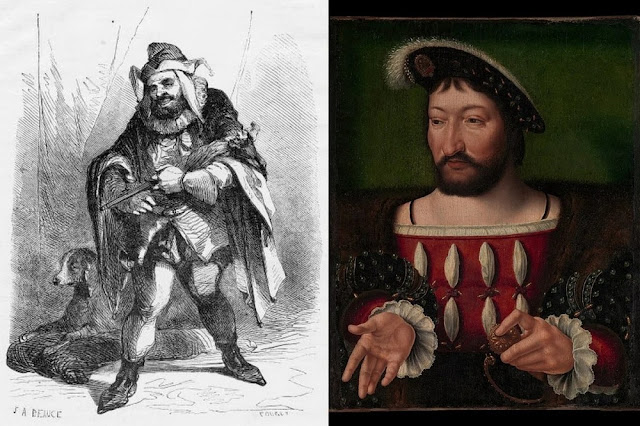How a court jester slapped the king's butt, then brilliantly convinced him not to kill him
 |
| Triboulet served as court jester under King Francis I, who ruled France from 1515 to 1547. |
Triboulet's quick humor rescued him from Francis I's deadly wrath, not once, but twice.
Court jesters hold a unique place in history. Playing the fool for kings and queens meant they were always in close proximity to royalty, but so very far from their rank and station.
Comedians often like to push boundaries, but that can be a dangerous business when your job is to entertain the peope who have executioners at their beck and call. Especially when you forget your place—or purposely ignore it, as the case may be—and playfully smack the reigning monarch square on the behind.
That little whoopsie was the claim to fame of Triboulet, a court jester who served King Francis I in 16th-century France. But it was how he got away with slapping the king on the butt and living to tell about it that earned him his place in history books.
According to Leonie Frieda's "Francis I: The Maker of Modern France," the king greatly enjoyed Triboulet's bawdy humor, though the jester frequently crossed the line with death penalty-worthy offenses. In one incident, Triboulet smacked Francis I on his royal behind, which infuriated the king. He threatened the fool with execution, but after taking a moment to calm down, he offered Triboulet an out: If the jester could come up with an apology that was even more insulting than the butt smack, he would live.
Triboulet thought fast and quickly came up with the best possible answer: "I'm so sorry, Your Majesty, but I didn't recognize you. I mistook you for the Queen."
Boom. King was owned. Triboulet lived.
In another instance, Triboulet offended a mistress of Francis I and again faced execution for his impertinence. However, the king, in his mercy, gave the jester the option of choosing his method of death.
"Good sire, by Saint Nitouche and Saint Pansard, patrons of madness," Triboulet responded, "I ask to die of old age." The king was left speechless, and true to his word, Triboulet lived to see another day. (And he did, indeed, die of old age in 1536.)
Humor and wit are often underestimated as survival skills, but Triboulet's narrow misses showcase how useful they can be. Even the World Economic Forum calls a sense of humor an "essential life skill" for its ability to protect us from disease and help us connect with others. Humor also plays an important role in long-term relationships.
Most of us won't have our lives literally depend on our quick wit like Triboulet, but it's not a bad idea to hone our humor skills. You just never know when a perfectly-timed zinger will come in handy.
Comments
Post a Comment